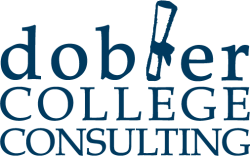How A Diverse Campus Makes A Difference
 This fall, I’m doing something different with my blog to spice it up a bit. I’ve invited several admission counselors from around the country to contribute posts about topics they feel high school students and their families should be paying more attention to as they go through the college search and application process. As much as I like to share tips and advice, why not get it straight from the horse’s mouth?
This fall, I’m doing something different with my blog to spice it up a bit. I’ve invited several admission counselors from around the country to contribute posts about topics they feel high school students and their families should be paying more attention to as they go through the college search and application process. As much as I like to share tips and advice, why not get it straight from the horse’s mouth?
Today’s post is the first in this series and it’s by Seth Babson Warner, an admissions counselor from Earlham College in Richmond, Indiana:
Growing up in a homogeneous, Connecticut suburb, I didn’t understand why colleges touted their diversity. What makes that important? I hadn’t experienced much, and didn’t know what I was missing.
But at some level, I knew it was a good thing. During my third week of college, my soon-to-be best friend and I were discussing admissions. I said that “getting in” should be about scores and grades alone. He pointed out that this would mean a much less diverse student body. “So what?” I asked.
“Would you prefer a class entirely of white, upper-middle class kids with a 700 on their SAT Math, or a diverse class that averaged 690?”
He had me there. At least at some level, to some degree, I already knew that diversity added meaning to the college experience. I just didn’t know how.
Diversity works in two ways to make an experience meaningful. First, there needs to be a discussion. It’s hard enough to get people of different races, classes, and sexualities in the same room. But deliberately engaging those differences can be even tougher. Conflicting perspectives often ask one side or the other to make a sacrifice, which means students must challenge themselves to negotiate.
This brings us to the second step: resolution. You can’t gain from other perspectives if you just disagree and walk away. Even if you don’t see eye-to-eye, it’s necessary to acknowledge others’ perspectives, and incorporate them into your understanding of the world. That’s where diversity changes lives. You become wiser because you better understand others—an invaluable skill whether you’re a CEO, a baseball coach, or in the case of one Earlham student, a magazine publisher.
So, what should prospective students look for? As we mentioned, it’s not enough to have different types of people. You need to have the discussion, too.
I always advise students to find a school that is diverse and cohesive. It’s easy to be one of those two: cohesive because everyone’s alike, or diverse yet divided. Doing both is much harder, but a school that manages it is one where a big, meaningful learning experience is possible.
That was a large reason I chose to work at Earlham College and why many of our students come here. No school is perfect, of course, but Earlham does a good job with diversity and cohesiveness.
On one hand, U.S. News and World Report ranks us 5th for the largest percentage of international students in the country, and one-fifth of our students are non-white Americans. And in recent months, at least one publication ranked Earlham 13th nationally for the percentage of students who study abroad, fulfilling a mission of the College for our students to learn about the world experientially.
On the other, our Quaker roots encourage us to see the “teacher within” one another and to address and build consensus on “touchy” issues as much as possible.
In your college search, all the basic rules apply. Visit campus, take advantage of an overnight, and talk to current students when you can. But think about diversity. Depending on where you’re from, it might not be something you consider, but diversity can change and bring remarkable meaning to your college experience.
Seth Babson Warner is an admissions counselor at Earlham College, a member of Colleges That Change Lives. He is a Connecticut native who loves numbers and Mets baseball. You can follow him on Twitter @SW_ECAdmissions.
If you want some help and guidance on your college search and application process, contact me today to set up an appointment for a free 60-minute consultation. Here’s what other families like yours are saying about how Dobler College Consulting made a difference for them.




